Driving a 1922 Detroit Electric highlights a century of EV innovation
Upon climbing aboard this tall horseless carriage, I’m greeted by unsettling controls. Where you’d expect a steering wheel to be there are instead two levers that hinge down from the B-pillar to horizontal positions. The upper lever, to the driver’s left hand, controls speed. The 10-inch-longer one is the steering tiller.
Just ahead of the chair-high bench seat we find a pedal to engage reverse. Two additional pedals reside at the front of the floor surface; the left one latches and releases the brakes for parking and the right one slows the vehicle in the normal manner.
After twisting a key to unlock the speed controller, a forward nudge of that lever commences forward motion. There is no mechanical commotion beyond a soft moan and the buzz of tires plying pavement. Instead of venturing onto the busy streets surrounding the headquarters of battery manufacturer Our Next Energy (ONE), in Novi, Michigan, we stick to the safe confines of the smooth road meandering through the company’s rambling parking lot.

Late in the 19th century, electrically-powered locomotives and trollies began relieving America’s horse-drawn carriages. Their operation was initially restricted to east coast cities because the electrical grid, connection to which was necessary for the first rechargeable lead-acid batteries, didn’t reach rural communities for decades.
The Anderson Carriage Company of Detroit began producing buggies and carriages in 1884. In 1907, this enterprise began offering its Detroit Electric, powered by a rechargeable lead-acid battery. A top speed of 25 mph was geared to urban streets and a reliable range of 80 miles was impressive for the day. Women and traveling doctors appreciated the easy starting (no hand crank to break your arm) and dependability. Sales swelled to 1000 to 2000 cars per year making the Detroit Electric America’s favorite alternative, such as it was, to a gas car.
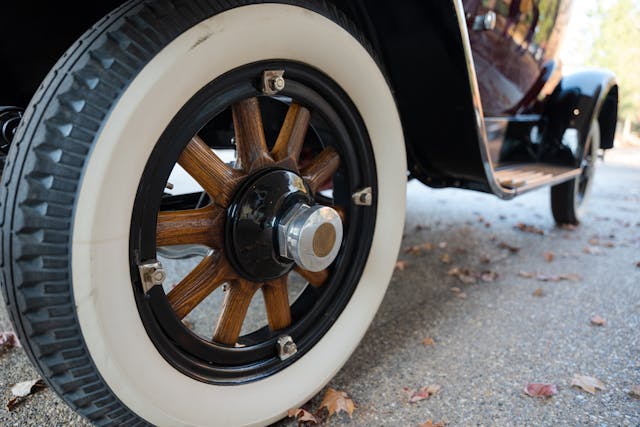
Ferdinand Porsche’s first automobile, logically called P1, was the 1898 Egger-Lohner C.2 Phaeton he constructed using a 5-horsepower electric motor providing a 20 mph top speed and 50 miles of operating range. At the turn of the 20th century, the Studebaker brothers, Ransom E. Olds, and Henry Ford all dabbled in electrics. With 300 or so start-ups vying for success in the emerging U.S. car market, steam initially earned 40 percent of the business followed by 38 percent for electrics and only 22 percent for gasoline cars. Mother Nature flipped that in 1901 when oil gushed out of a Spindletop drilling rig near Beaumont, Texas. People didn’t have patience for steam engines to build pressure, and once the price of gas fell below 10 cents a gallon, the internal combustion engine secured its overwhelming advantage.
This particular Detroit Electric’s charmed life includes 60 years of residence in a west coast museum. “I bought it 14 months ago sight unseen following a chance phone call to the second owner,” says ONE chief executive Mujeeb Ijaz. “An ex-factory worker was kind enough to gather extensive files containing original documentation and parts drawings to go with the vehicle after it was repurchased by Detroit Electric from the cash-strapped original owner and upgraded in the early 1930s. My intention is to enjoy this car’s history while learning from its past.”

Ijaz believes the stunning red and black exterior paint may be factory original. Chrome bumpers and the huge horn trumpet sparkle brightly. Pressing a button in the end of the speed controller warns pedestrians (or horses, in period) to clear a path.
Nudging the speed controller a second notch forward sends additional voltage to the DC motor. Acceleration is modest to say the least so I go for broke into the third and fourth notches which deliver 96 volts and maximum current to the motor. When I yank the lever back well ahead of an approaching turn, the combination of a slight grade and reduced voltage sheds velocity expeditiously.
The speed lever’s operation is clunky because the switchgear it controls must be robust to last the life of the vehicle. In comparison, the right-hand steering tiller’s operation is utterly smooth. Its quirk is effort varying with direction.

Pressing the tiller forward to turn left is a breeze. Yanking it back to go right, the effort demanded is so much higher that I’m tempted to use both hands. For especially tight right turns, this tiller must be moved all the way back to the driver’s rib cage. It’s an example of curious man-machine ergonomics; we humans are typically stronger pressing something away from our torso than yanking an object toward it.
Even though the brakes operate only on the rear wheels, they are quite effective slowing this 3000+ pound horseless carriage. Pulling the speed-control lever rearward applies what is effectively an emergency brake gripping the motor’s output hub. Straight axles at both ends of the vehicle attach to the frame via semi-elliptic leaf springs. Bumps are nicely damped by rotary shock absorbers.
The Detroit Electric’s phone-booth proportions are the result of the vertical stack of 18-inch, 10-spoke steel-rimmed hickory wheels, a voluminous powertrain, and a carriage body carrying two occupants bolt upright. Oddly, there is also room for two “occasional” passengers, provided they ride on fold-down rear-facing perches positioned just aft of the windshield. Interior trim is a lavish arrangement of fine fabrics and carpeting with numerous stitched fleur de lis adornments on the ceiling and side walls.
It’s easy to see why the Electric cost four times as much as a Ford Model T two-door coupe in 1922. According to Ijaz, a toilet could even be purchased for the right-front position for use on trips into the hinterlands.
Looking underneath this vehicle, it’s also evident why it towers some seven feet skyward. The large, round DC motor residing directly beneath the passenger cabin is linked by an open shaft to a bevel gear in the rear axle. Two steel frame members hold everything together. Dog houses at both ends of the body contain a total of 12 modern lead-acid batteries. One thoughtful touch: the batteries are adorned with Detroit Electric script stickers.
Our Next Energy
Ijaz has such an appreciation for battery-electric transportation’s roots perhaps because he’s so invested in its future. His company, ONE, has leased a $1.6-billion gigafactory located 25 miles west of downtown Detroit. This 660,000 square foot—15 acres under one roof!—facility will employ 2100 workers to manufacture 200,000 battery packs per annum. Founded only two years ago, ONE is hustling at warp speed thanks to driven management, shrewd investor backing, and $236 million in Michigan state grants.
Top priorities are driving range, safety, and cost, says Ijaz. To those ends, ONE has developed two proprietary battery architectures. The first, dubbed Aries, contains lithium-iron-phosphate cells that do not use nickel or cobalt. ONE’s Aries chemistry greatly reduces the chance of internal shorting and thermal runaway, which is the cause of most fires in BEVs (a considerably rarer event as compared to gas cars).

Full-scale Aries production begins next year for commercial and fleet applications. ONE plans to source constituent materials in the western hemisphere to maximize sustainability while skirting supply chain issues. Consider that some electric car makers are even considering mining cobalt and nickel from the ocean floor to avoid the cost and hardship of shipping materials to China for refining.
ONE calls its second battery family Gemini. The dual-chemistry design combines Aries cells for daily driving with another technology, shrouded by 14 patents, to provide much greater driving range than what we get from today’s batteries. This second chemistry for the range extender employs lithium and nickel in a unique configuration. By deleting the anode—wherein electrons leave each cell via the negative terminal—graphite is eliminated and the nickel inside Gemini is cut by 75 percent over today’s cells.
ONE claims that its Gemini range extender offers the highest energy density ever produced in large-format cells. A second advantage: this cell can be produced using existing equipment, significantly reducing cost and manufacturing lead time. When Gemini’s daily-driver Aries chemistry cells near depletion on a long journey, the second chemistry automatically kicks in to recharge the pack on the roll.

Another ONE attribute is a more efficient cell arrangement. GM/LG Chem pouch cells and Tesla/Panasonic’s cylindrical cells use up considerable space inside the battery pack. In contrast, ONE cells are prismatic—hard-surfaced rectangular shapes—that squander no real estate while also increasing the pack’s structural rigidity.
As a proof of concept, ONE retrofit a Tesla Model S it owned with densely packed prismatic cells mounted beneath the car in the original skateboard space. The results were impressive: a 752-mile drive on Michigan roads without recharging, nearly doubling the Model S’s EPA-rated range. For another test, the car ran a steady 55 mph on a chassis dynamometer—882 miles logged on a single charge. It should be noted that this latter experiment employed cobalt-nickel chemistry, not the Aries/Gemini batteries ONE will soon produce with lithium-iron-phosphate and lithium-nickel chemistries.
The space between, the road ahead
More than 13,000 Detroit Electrics were sold over three decades. Tight gas supplies during World War I helped Anderson’s cause but by 1925, when the mass-produced Ford Model T cost only $250 (a tenth as much as a Detroit Electric) his company was doomed. The 1929 stock market crash dispatched Anderson to bankruptcy, though leftover Detroit Electrics were available for purchase as late as 1942.
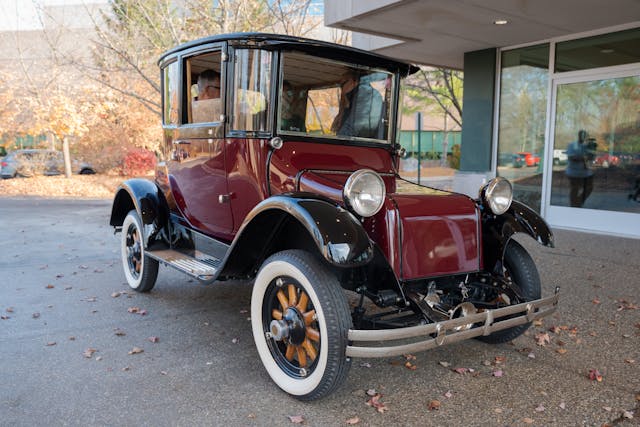
Half-a-century later, battery-electric technology had advanced to the point that it was deemed suitable for NASA’s Apollo moon missions. Boeing and GM collaborated on the 1971–72 Lunar Rovers which successfully transported astronauts on excursions totaling 56 miles during Apollo 15, 16, and 17 missions. The first modern electric car was the EV1 coupe built by GM for lease beginning in late 1996. Using Corvette-like plastic body panels atop an aluminum space frame, this two seater was powered by a 137-horsepower electric motor energized by lead-acid batteries. The second-gen edition used nickel-metal-hydride batteries to stretch driving range from 100 to 160 miles. Disappointed by the EV1’s demise, Martin Eberhard and Marc Tarpenning founded Tesla Motors in mid-2003. Six months later Elon Musk invested in this budding enterprise to become Tesla’s chairman.
Electric cars have never been more popular (nor more controversial) but fears about their utility and limited range remains widespread. Efforts by ONE and its competitors to double today’s battery capacity aim to relieve such range anxiety. Government and private efforts to add charging stations will also help. New tech batteries will diminish today’s electric vehicle weight disadvantage. Lighter is obviously better for acceleration performance. Electrics are already quick responders because of the bounty of torque available the instant their wheels start turning.

Some enthusiasts still regard electrics as soulless transportation modules, but OEMs are keen to demonstrate that car enthusiasm won’t die with EVs. Dodge’s CEO Tim Kuniskis, set on further securing his brand’s reputation for performance, recently announced the all-electric Dodge Daytona SRT muscle concept. “Technology moves forward and the customers and tuners move right along with it,” he said at the concept reveal in Detroit. “We’re demonstrating how old-school hot-rodding will thrive in an electrified muscle-car future.”
We’re not suggesting it’s time to sell our beloved Chargers, Corvettes, and Mustangs. To the contrary, well-kept ICE machines will surely prove to be shrewd investments should the main transportation fleet migrate to electric propulsion.
From 1911 to 1916, Thomas Edison’s nickel-iron batteries were available as a $600 upgrade for the Detroit Electric, advertising 80 miles between charges. Over 200 miles was achieved in at least one reported instance. Ijaz adds, “In the coming years we’ll install ONE batteries in our car to repeat a trip made back in the day from Detroit to Atlantic City, New Jersey. Our goal is completing that 450-mile journey on a single charge.”
My eagerness for full throttle saw our test drive climb to an estimated 25 mph—often quoted as this Electric’s terminal velocity—before we come to the end of the runway. As Ijaz and other electric innovators look ahead, there’s never been more of it.
Check out the Hagerty Media homepage so you don’t miss a single story, or better yet, bookmark it.
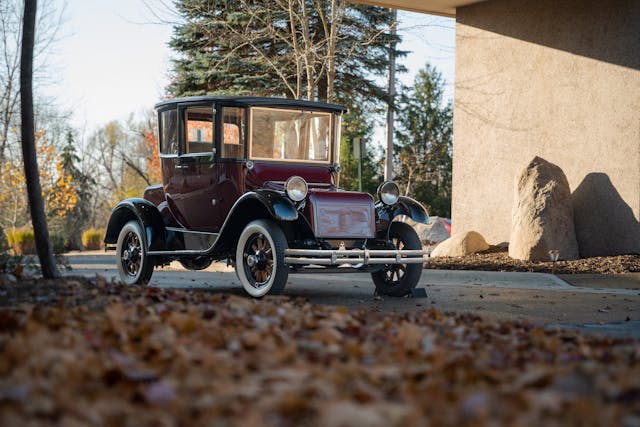

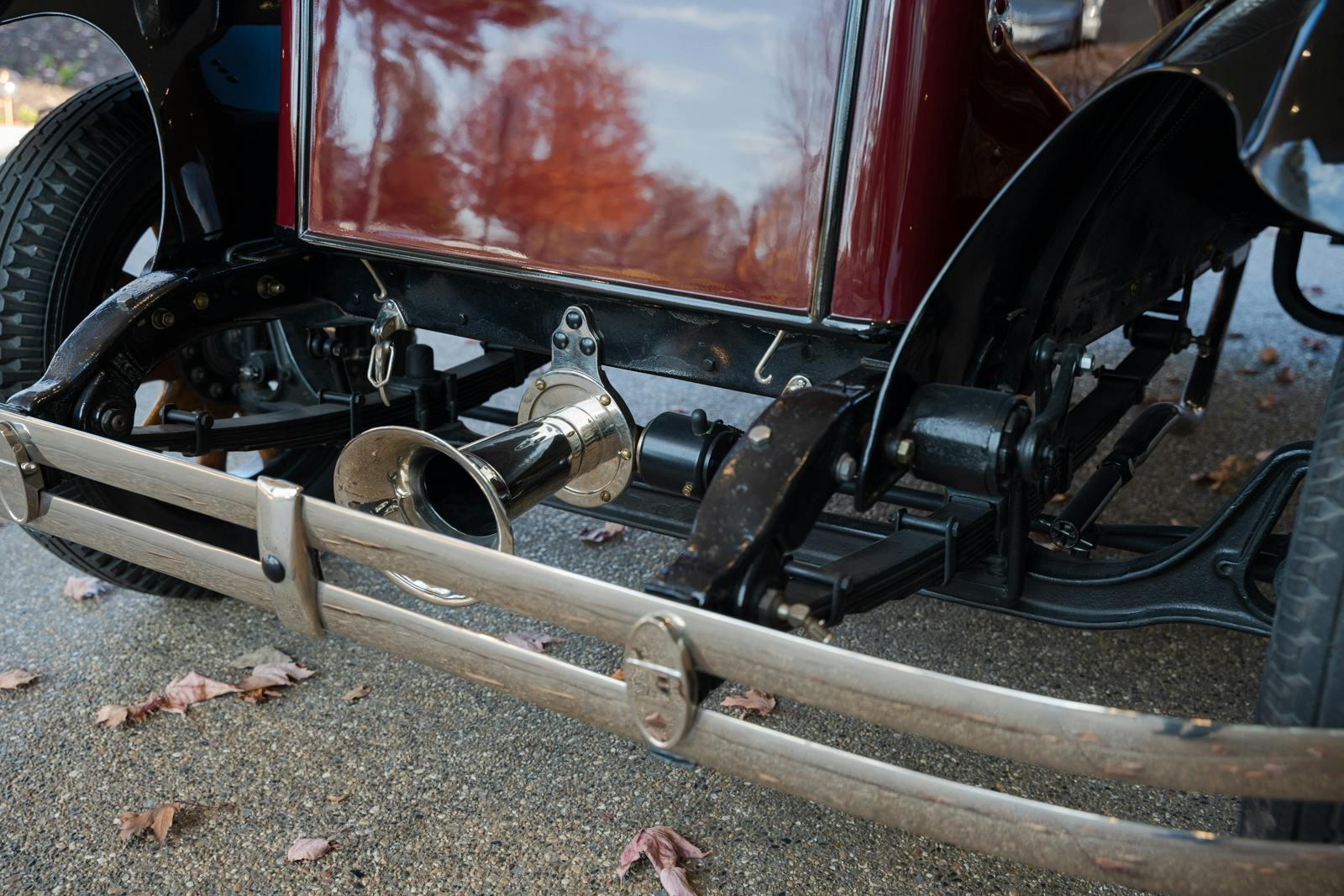
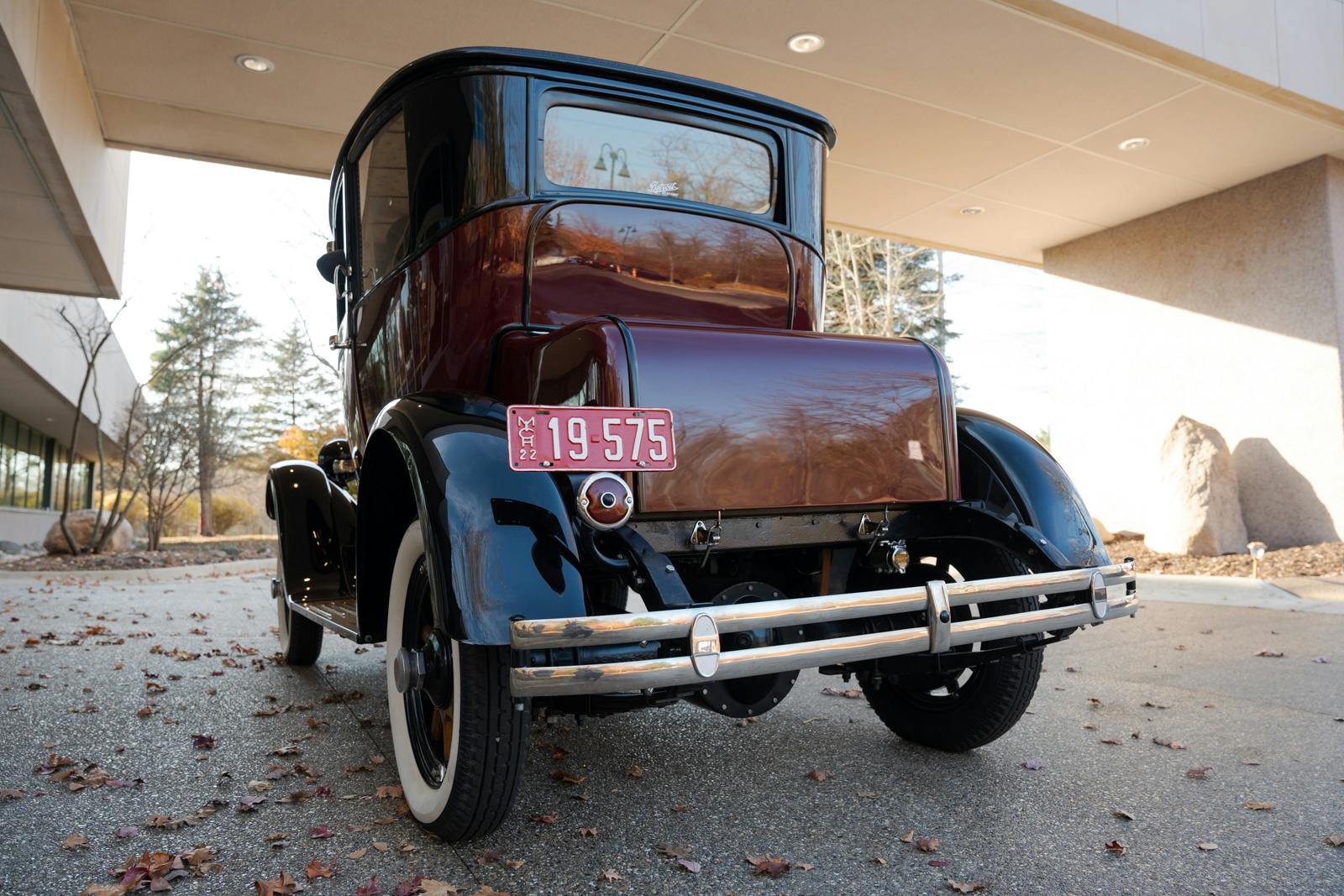


I think what this tells us is that we tried this once before historically
And hydrocarbon fuel will be cheap again once the heavy hand of government is removed and history will repeat itself. And we’ll be left with an environmental disaster of battery disposal after our grid is taxed to breaking.
“ Early in the 19th century, electrically-powered locomotives and trollies began relieving America’s horse-drawn carriages.”
Ah-hem. You mean early in the 20th century (or, for the less fancy, “the 1900s”).
In truth, this should have read LATE in the 19th century, as the phenomenon described was happening toward the end of the 1800s. Thanks for pointing out the inaccuracy, it’s been fixed.
This isn’t some species that was obliterated by deforestation, or the building of a dam. Dinosaurs had their shot, and nature selected them for extinction.
Much like EVs, yet here we are in Jurassic Park
Duke energy is fortifying our power grid, our street in fact. If what they’re doing here happens all over it’s going to be ugly… I wonder if this is partly EV related.
Also, can Hagerty do a case study for/ against integrating flexible solar cells in the bodywork of cars? Seems like a no brainer. While sitting there at work for hours and hours and hours of prime daylight, why not charge by the sun??
Exactly! I’m not rushing out to buy an EV just yet, but when you can buy cheapo solar panels and battery storage units (jackery) for camping, etc., at your local Harbor Freight store, the roof panel design of every new EV should consist of solar panels! Charging while you drive, while you’re parked, even if you run out of juice 1/4 mile from your intended charging station you wouldn’t necessarily have to call for a ICE tow truck.
Those Detroit Electric cars are truly elegant. Henry Ford’s wife Clara drove one for decades for the same reasons other women did. No way she was going to try and crank a dirty running Model T. Her car can still be seen at The Henry Ford museum.
Growing up in southeastern Pennsylvania the little auto museums like Boyertown PA and Berks county and Bucks county historical societies had Baker Electrics and Detroit Electrics on display- often in the basement and off in a dark corner. They were dusty curiosities. One local gas service station had an electric vehicle stuffed in a back storage room with stuff all piled up on it. Owner said twas his grandfather’s car and he couldn’t part with it. Gas Station turned into a petro convenience store by 1980. Hopefully car got saved. Electric cars came to Hershey and Mucungie big shows every year on trailers. Just memories now.
Interesting story. I still feel that batteries are the weak link in the EV experience. We need a power generator, not a battery for our electric motors. Quick and cheap to refuel. But the push on EV’s, fertilizers being banned in various countries around the world has a darker outcome in mind, control. You will comply.
Along the Hudson River at a place called Green Island there’s a hydroelectric generating plant built by Henry Ford. It was built to charge MrFords batteries for his electric cars. Part of the plant generated AC power and the other part DC for his batteries. For generations the DC side sat idle but as demand for more power grew they converted the DC dynamo’s to AC power. The plant is still in use and supplies power for the residents of Green Island NY
An 80 mile range? Seriously? If true, that is amazing. The Leaf of a decade ago could hardly do more than that!